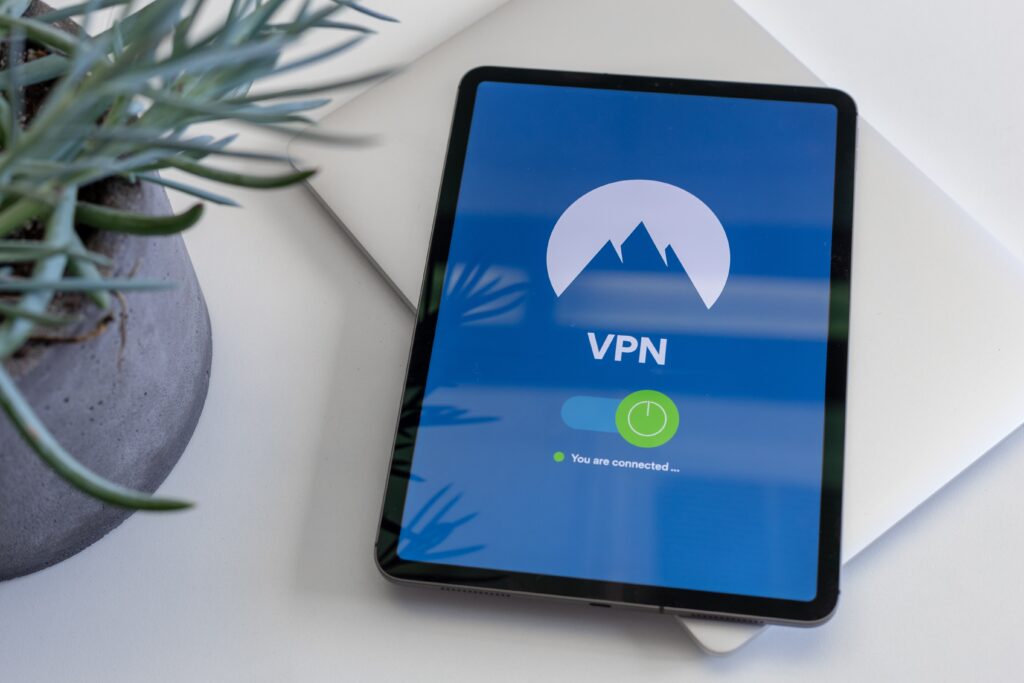In the world of cybersecurity, staying vigilant is essential to protect your sensitive information and assets from cyber threats. That’s where Cyber SIEM comes in – the acronym stands for Security Information and Event Management. With Cyber SIEM, you have a powerful tool at your disposal to enhance your security monitoring and incident response capabilities. By analyzing and correlating data from various sources, Cyber SIEM can detect potential security breaches and provide real-time alerts, enabling you to swiftly respond and mitigate any potential damages. In this article, we will explore the importance of Cyber SIEM in safeguarding your digital environment and discuss how it can help organizations stay one step ahead of cybercriminals.

Introduction
In today’s digital age, the need for robust cybersecurity measures is more important than ever. As businesses and individuals increasingly rely on technology, cyber threats continue to evolve and become more sophisticated. To protect your valuable data and assets, it is crucial to have effective security monitoring and incident response systems in place. One such system that plays a vital role in safeguarding against cyber threats is Cyber SIEM. In this article, we will explore what Cyber SIEM is, its importance, how it differs from traditional SIEM, its components, implementation strategies, best practices, challenges, and its overall benefits.
What is Cyber SIEM
Definition
Cyber SIEM, also known as Security Information and Event Management, is a comprehensive approach to security monitoring and incident response. It combines various technologies, processes, and policies to provide real-time visibility into the security events occurring within an organization’s network. By aggregating and analyzing data from various sources, Cyber SIEM enables organizations to detect, respond to, and prevent security incidents effectively.
Function
The primary function of Cyber SIEM is to monitor network and security events, collect logs and other relevant data, analyze them for potential anomalies or threats, and provide actionable insights to security teams. It serves as a centralized platform to gather information from diverse sources, such as network devices, servers, firewalls, intrusion detection systems, and more. This consolidated view allows for proactive threat hunting and effective incident response.
Benefits
Implementing Cyber SIEM offers numerous benefits to organizations. Firstly, it provides enhanced visibility, allowing security teams to gain a complete understanding of security events within their network. This visibility enables quicker detection of threats, helping to minimize the impact and scope of a security incident. Additionally, Cyber SIEM offers real-time alerts and automated responses, enabling quicker action and reducing the risk of data breaches. Moreover, the insights provided by Cyber SIEM can help organizations improve their overall security posture and compliance with industry regulations.

Importance of Security Monitoring
Identifying Threats
Security monitoring is a crucial aspect of cybersecurity. By monitoring network traffic, event logs, and system activities, organizations can actively detect and identify potential threats. With cyber threats evolving at a rapid pace, it is essential to have continuous monitoring in place to identify the presence of malicious activities, such as unauthorized access attempts, malware infections, or suspicious behavior.
Preventing Data Breaches
Data breaches can have severe consequences for organizations, including financial loss, reputation damage, and legal implications. Security monitoring plays a pivotal role in preventing data breaches by continuously monitoring for security vulnerabilities and unauthorized activities. By identifying and addressing these risks proactively, organizations can minimize the chances of a data breach occurring.
Detecting Anomalies
In addition to identifying known threats, security monitoring also focuses on detecting anomalies or deviations from normal system behavior. By establishing a baseline of normal activities, Cyber SIEM can identify any abnormal patterns or behaviors that could indicate a potential security incident or compromise. This proactive approach allows organizations to take immediate action and mitigate the risks associated with emerging security threats.
Incident Response
Definition
Incident response refers to the process of identifying, managing, and recovering from a security incident or breach. It involves a coordinated effort by security teams to investigate the incident, contain the impact, eradicate the threat, and restore normal operations as quickly as possible. An effective incident response plan is essential to minimize the damage caused by a security incident and ensure business continuity.
Importance
Having a well-defined incident response plan is crucial for organizations to effectively handle security incidents. In the event of a breach, a prompt and efficient response can significantly reduce the impact, limit potential damages, and aid in the recovery process. Incident response also helps organizations learn from security incidents, enabling them to update and improve their security protocols to prevent future incidents.
Key Steps
An effective incident response plan typically includes several key steps. These steps may vary depending on the organization’s size, industry, and specific security needs. However, the general framework consists of preparation, detection and analysis, containment, eradication, recovery, and post-incident analysis. By following these steps, organizations can ensure a systematic and organized response to security incidents.

Traditional vs Cyber SIEM
Differences
While traditional SIEM (Security Information and Event Management) systems and Cyber SIEM share the same core objective of security monitoring and incident response, there are distinct differences between the two. Traditional SIEM primarily focuses on analyzing logs and events generated by IT infrastructure to identify potential security incidents. On the other hand, Cyber SIEM goes beyond traditional SIEM by incorporating threat intelligence feeds, behavioral analytics, and advanced machine learning algorithms to better detect and respond to sophisticated cyber threats.
Advantages of Cyber SIEM
The advanced capabilities of Cyber SIEM offer several advantages over traditional SIEM systems. Firstly, Cyber SIEM provides a more comprehensive and holistic view of an organization’s security posture. By leveraging threat intelligence feeds and behavioral analytics, Cyber SIEM can identify unknown threats and zero-day vulnerabilities that may go undetected by traditional SIEM systems. Furthermore, the integration of machine learning algorithms enables Cyber SIEM to adapt and improve its threat detection capabilities over time, enhancing overall security monitoring and incident response effectiveness.
Components of Cyber SIEM
Log Management
Log management is a critical component of Cyber SIEM. It involves collecting and storing logs generated by various devices and systems within an organization’s network. These logs provide valuable insights into system activities, user behavior, and potential security incidents. By aggregating and analyzing logs, organizations can identify patterns, detect anomalies, and gain a deeper understanding of their overall security posture.
Security Information Management
Security Information Management involves the collection, analysis, and correlation of security-related information from multiple sources. This component focuses on centralizing security event data, vulnerability assessments, and threat intelligence to provide security teams with a comprehensive view of potential risks. By integrating this information, organizations can make informed decisions to mitigate threats and enhance their overall security framework.
Security Event Management
Security Event Management involves real-time monitoring and analysis of security events within an organization’s network. This component focuses on detecting and alerting security teams about potential security incidents as they occur. By leveraging advanced analytics and correlation techniques, Security Event Management enables organizations to respond promptly to security events and minimize their impact.
Security Incident Management
Security Incident Management involves the overall coordination, response, and resolution of security incidents. This component focuses on defining the processes, roles, and responsibilities for incident handling. It includes activities such as incident identification, assessment, containment, eradication, recovery, and post-incident analysis. By following established incident management processes, organizations can effectively minimize the impact of security incidents and ensure a swift return to normal operations.
Implementation of Cyber SIEM
Assessment and Planning
Before implementing Cyber SIEM, it is crucial to conduct a thorough assessment of an organization’s existing security infrastructure, policies, and processes. This assessment helps identify potential gaps and requirements that need to be addressed. With a clear understanding of the organization’s security needs, a comprehensive implementation plan can be devised, outlining the required resources, timelines, and milestones.
Deployment and Configuration
Once the assessment and planning phase is complete, the next step is deploying and configuring the Cyber SIEM solution. This involves installing necessary hardware or software components and integrating them with existing security systems. Configuration tasks include defining log sources, setting up alerts and thresholds, and establishing correlation rules. It is essential to ensure that the implementation is aligned with the organization’s specific security requirements and policies.
Integration with Existing Systems
Integration with existing systems is a critical aspect of Cyber SIEM implementation. This involves integrating the Cyber SIEM solution with other security tools, such as firewalls, intrusion detection systems, and vulnerability scanners. Integration enables seamless data flow between systems and enhances the overall effectiveness of security monitoring and incident response. Additionally, integration ensures that the Cyber SIEM solution integrates with the organization’s overall security architecture and supports collaboration between different security teams.
Best Practices for Cyber SIEM
Continuous Monitoring
Continuous monitoring is a critical best practice in Cyber SIEM. It ensures that security events and logs are monitored in real-time, enabling prompt detection and response to potential threats. Continuous monitoring also allows organizations to identify and address any deviations from the baseline, providing proactive protection against emerging security risks.
Real-time Alerts
Real-time alerts are essential for effective incident response in Cyber SIEM. By configuring alerts for specific events or conditions, security teams can receive immediate notifications when a potential security incident occurs. Real-time alerts enable swift action, reducing the time between incident detection and response, and minimizing potential damages.
Automated Response
Automated response capabilities are a valuable feature of Cyber SIEM. By automating certain incident response actions, organizations can mitigate the impact of security incidents and reduce the burden on security teams. Automated responses can include actions such as blocking IP addresses, isolating compromised systems, or initiating incident remediation workflows.
Regular Updates and Patching
Regular updates and patching of the Cyber SIEM solution are crucial to maintaining its effectiveness and protecting against emerging threats. Updates often include bug fixes, security enhancements, and new features. By regularly updating the Cyber SIEM solution, organizations can ensure that they are benefiting from the latest threat intelligence and improvements in security monitoring and incident response capabilities.
Challenges of Cyber SIEM
High Initial Costs
Implementing Cyber SIEM can involve significant upfront costs, including hardware, software, and implementation expenses. Organizations must carefully evaluate their budget and resource availability before embarking on a Cyber SIEM deployment. However, it is essential to consider the long-term benefits and cost savings that can be achieved through improved security monitoring and incident response.
Overwhelming Volume of Data
As organizations generate vast amounts of data each day, the volume of logs and security event information produced can be overwhelming. Effectively managing and analyzing this data can be a major challenge for security teams. To address this challenge, organizations need to implement robust log management and data analysis strategies, including intelligent log filtering, data aggregation, and advanced analytics techniques.
Complexity of Security Policies
Maintaining and enforcing comprehensive security policies can be complex in a Cyber SIEM environment. Organizations need to define clear policies for log retention, access controls, incident response procedures, and more. Developing and implementing these policies consistently across the entire organization requires careful planning, coordination, and ongoing review.
Conclusion
In today’s digital landscape, Cyber SIEM plays a crucial role in enhancing security monitoring and incident response capabilities. By providing real-time visibility into security events, Cyber SIEM enables organizations to detect and respond to potential threats promptly. Its advanced features, such as threat intelligence integration, behavioral analytics, and automated responses, enhance overall security posture and minimize the risk of data breaches. However, implementing Cyber SIEM requires careful planning, deployment, and integration with existing systems. By following best practices and addressing the challenges associated with Cyber SIEM, organizations can maximize their cybersecurity effectiveness and safeguard their valuable assets from evolving cyber threats.

